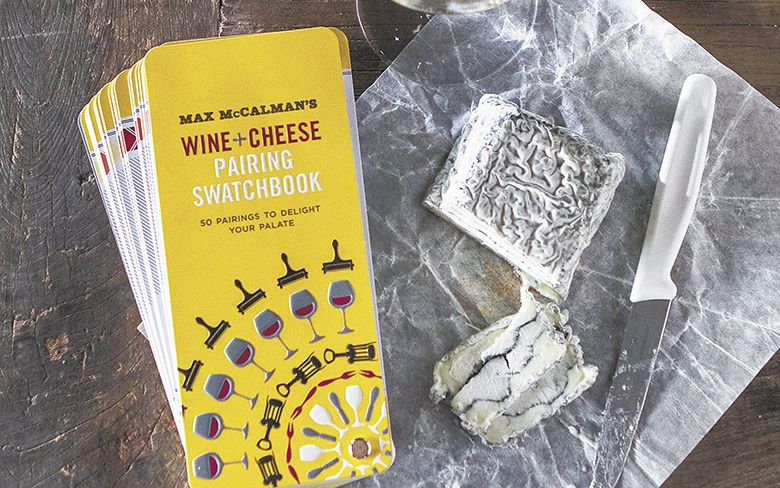Palatable Pick-torial
McCalman pairs cheese and wine by swatch
Wine and cheese, the ubiquitous combination so often cited as a match made in heaven, can sometimes fall flat, or worse, fail outright.
There are many subtleties to enjoy both in the glass and on the plate. Finding that perfect combination elevating both is occasionally an elusive pursuit. As often as we find a hit, we find an “almost, but not quite” partnership.
Vintage variations play a role as wines differ from harvest to harvest; compound this fact with the daily fluctuations in milk composition, flavor and even weather, which impacts the final cheese, as well as the various stages of ripeness you might encounter — what works one year, or even one day, may not work the next.
What to do? Call in the expert help, of course.
In the last two decades, author, educator and Maître Fromager Max McCalman has been “spreading the curd,” while seriously studying how many of the world’s best cheeses and wines come together on the palate.
In his newest publication, “Max McCalman’s Wine + Cheese Pairing Swatchbook: 50 Pairings to Delight Your Palate,” (Clarkson Potter, 2015) he has created a handy and easy-to-use resource in an innovative format.
The slim guide easily tucks in a bag and will transform your pairing prowess at the cheese counter or wine shop. Just a glance will inspire with tried and trusted duos that work.

The book is based on years of detailed tasting notes compiled during his time at New York’s Picholine, where he served as Maître Fromager, and later during his tenure at Artisanal, a New York educational center and cheese retailer, as well as on his extensive travel and cheese judging around the world.
Each glossy, cardstock page pictures and describes one classic cheese, providing milk type, provenance and similar cheeses at a glance. On the back, a review of the wine pairing and some information on how each partner elevates the marriage.
As with the cheese, additional wine pairings are included, helpful as many of the specific cheeses will be available only at the most well-stocked cheese counters. By including cheeses with similar flavor profiles, your chances of finding something at your favorite shop increase exponentially.
This is by no means an exhaustive guide, more of a whet-your-appetite tool to quickly find and understand pairings that work. If you are looking for that deeper dive, McCalman’s excellent “Mastering Cheese” (2009) is the way to go.
“When tasting wine and cheese, I am looking at the organoleptic profiles of both the wine and the cheese, and seeking harmony between the two,” he says. “It’s a moving target because of the many variables in play on both sides, but there are combinations that are more well suited and primed for potential. These are the combinations I highlight in the Swatchbook.”
Pairing considerations begin with aroma — smelling both the cheese and the wine prior to indulging the flavor.
Upon tasting, evaluate the flavor. Consider the relationship between the sweetness of the wine and the savory and salty notes of the cheese. “The saltier the cheese, the sweeter the wine should be,” says McCalman.
Next, consider the acidity levels of both wine and cheese. The level of acidity should be similar, he says, noting “the more puckering a wine, the better it seems to work with more acidic cheeses.”
Then there’s sapidity, the fullness and persistence of flavors — how long they linger on the palate. “A big, bold, assertive cheese demands a big, bold, assertive wine,” he advises.
Don’t forget complexity, how much is going on with the flavor of the wine and the cheese. This is one instance where you want to let either the complex wine or the complex cheese lead, choosing a simpler, more demure partner.
And finally, the finish. “At times,” he says, “all other factors may spell synergy but the finish is lousy. Failed pairings often manifest themselves with a pronounced, metallic taste.”
One final caveat before you rush out to your favorite cheese and wine shop for a wedge or the new book: he advises his recommendations be viewed as guidelines rather than rules.
McCalman says, “Experiment with your own pairings and use them as your starting point for a grand adventure.”



 Christine Hyatt promotes the wonders of fine cheese through food writing, recipe creation, food photography and video. Connect with her on Facebook or
Christine Hyatt promotes the wonders of fine cheese through food writing, recipe creation, food photography and video. Connect with her on Facebook or 







